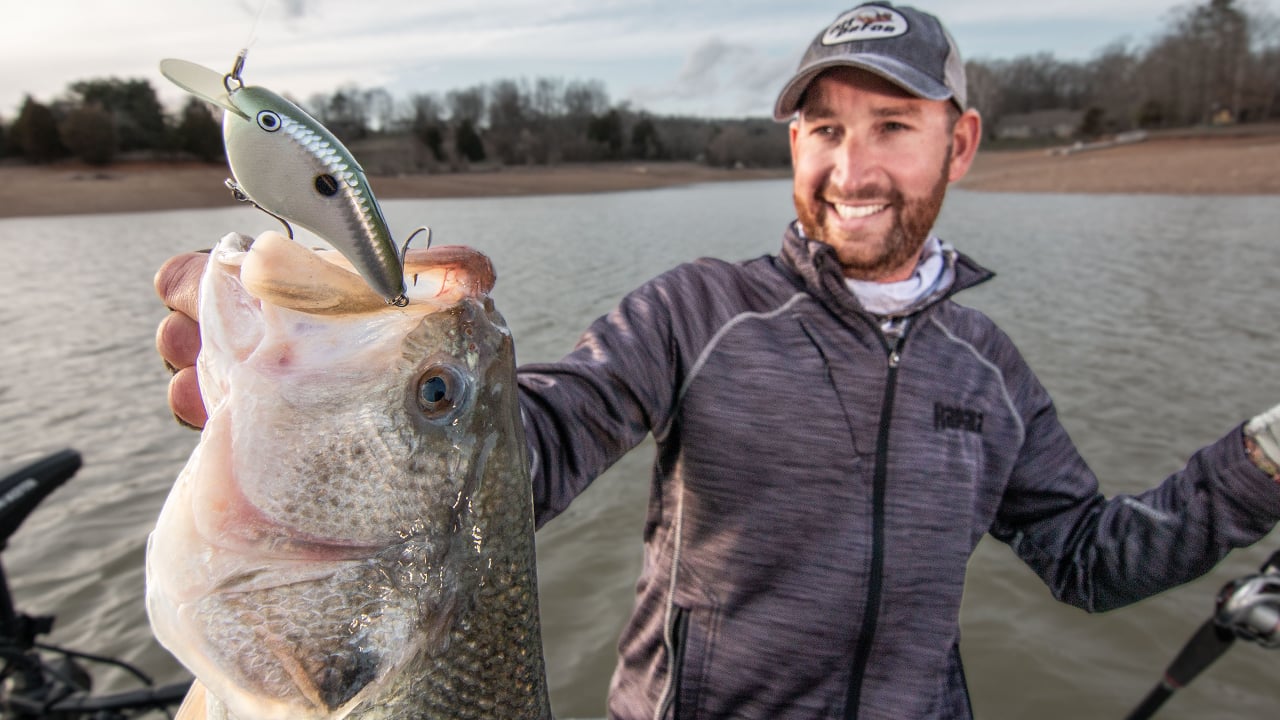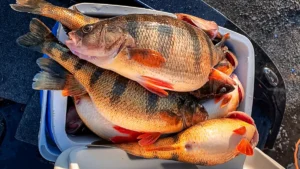Flat-sided crankbaits start to excel for bass as winter gives way to early spring — basically, the onset of a warming trend that sets off the prespawn. For Ott DeFoe, this seasonal transition means trading small balsa crankbaits like the Shad Rap for bigger flat sides.
DeFoe goes into great detail on when, where, and how to fish “flat sides.” Specifically, he discusses how to work the bait based on water temps and make the most productive casts possible based on the bank angle. With a lure design resume and a few crankbaits in his name (think Rapala’s OG Slim 6 and OG Tiny 4), there’s something for all of us to gain. *Tackle and gear listing below.
Ott’s 7 tips for maximizing success with flat-sided crankbaits:
- Head shallow and cover water. The onset of the prespawn is marked by an upward trend in water temperatures, with bass repositioning by spreading out in shallower water. Flat-sides are the ideal tool for covering water and locating where and how bass are set up. Their flat body shape makes them more subtle, a plus in cool water, yet their profile is more prominent, a benefit when targeting quality prespawners.
- Make bottom contact. Think of a flat-side crankbait as a moving, bottom contact bait. You’re going to catch a lot more bass if the lure is in constant contact with the bottom, or in contact with cover such as brush or laydowns (read bullet 5).
- Make semi-parallel casts to the bank. DeFoe maximizes covering a range of depths while maintaining bottom contact on a single cast by reading the bank angle and positioning his boat accordingly. For a typical 6- to 7-foot diving flat-side, this means making a long semi-parallel cast down a 45-degree bank, landing the bait in 2 feet of water, and reeling back to the boat positioned in 7- to 8 feet of water.
- Adjust your retrieve speed based on water temperature. Experiment, but generally, reel slower in colder water and speed up as water temperature increases.
- Vary your cadence. DeFoe retrieves the bait with a mix of pauses, pulls, and straight retrieves to trigger bass. It’s almost like working a jerkbait in cold water, although, on the bottom. If you’re fishing it around brush, worm it through with your rod tip up, feeling, and feathering about as you go.
- Use a classic crankbait setup. A medium to medium-heavy power rod with a slower or moderate taper is optimal for hooking and keeping bass buttoned. DeFoe prefers a reel in the 6.8:1 range, as he can throttle his retrieve speed down or up with maximum control. Fluorocarbon ranging from 12-14 pound test, and even up to 17-pound test around heavy cover gets it done.
- Seek warmer water. Prespawn bass are extremely water temperature sensitive. Keep an eye on your water temp readout and on the land. Tributary water sources such as “run-ins” in highland reservoirs are often a few degrees warmer, especially after a warm rain.
Check out this roundup video for more spring bass lure recommendations.
FEATURED TACKLE & OPTIONS
FLAT-SIDES
- Rapala OG Slim 6
- Rapala OG Tiny 4
- HOOK (stock on OG Cranks) – VMC Black Nickel 1X Strong Hybrid Treble Hooks
- ROD – Bass Pro Shops Crankin’ Stick
- REEL – Bass Pro Shops Johnny Morris Platinum Signature Casting Reel, 6.8:1
- LINE – Bass Pro Shops XPS KVD Signature Series 100% Fluorocarbon
- SUNGLASSES – Costa Del Mar Brine
FISH FINDERS & BOAT CONTROL
- FISH FINDER – Humminbird HELIX 12 CHIRP MEGA SI+ GPS G4N
- MAPPING – LakeMaster Southeast States PLUS V3
- 360 SONAR – Humminbird MEGA 360 Imaging
- TROLLING MOTOR – Minn Kota Ultrex


![[VIDEO] Greg Hackney’s Formula for Post-Spawn Bass Success](https://www.wired2fish.com/wp-content/uploads/2025/05/Hackney_Post-Spawn_Bass-300x169.webp)
![[VIDEO] Scanlon’s Guide for Stained Water Spawning Bass](https://www.wired2fish.com/wp-content/uploads/2025/05/scanlon-jig-300x169.webp)
![[VIDEO] Seth Feider’s Prespawn Jig Pattern Explained](https://www.wired2fish.com/wp-content/uploads/2025/04/prespawn-jig-300x169.webp)









